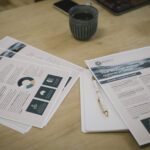Three Steps to Sustainability
The word ‘sustainability’ often conjures up images of solar panels, tree planting or carbon accounting. While there’s no doubt these are important, sustainability is so much more.
We think about sustainability as an integration of social, environmental and economic concerns – and is also how it should be approached.
Why three steps?
We tackle sustainability planning in three important steps:
- Insights – to inform decision making.
- Measurement and strategy – to map out direction.
- Action and communication – implementing actions and sharing your story internally and externally.
We often see step one (insights) overlooked or undervalued, in favour of jumping to individual actions. This can lead to missed opportunities. It can also direct time and resources to efforts that don’t deliver the most effective outcomes, either for your organisation, or the environment.
An integrated approach considers the nuances of your organisation. We understand that factors such as location, your industry sector, life cycle and your supply chain can radically change how appropriate or effective different options are.
All about the insights
Our personalised sustainability insights (step one) can include:
- Key trends – at industry, organisation and location levels.
- Supply / value chain mapping – the basis for life cycle thinking.
- Strengths and opportunities assessment.
- Environmental/Social/Governance (ESG) risks and material topics analysis – showing your key topics to address and report on.
These insights all work together to identify:
- Opportunities.
- Potential areas of most impact.
- Where you are best placed to make a positive impact.
Ultimately, this can guide your priorities and give you the confidence of an evidence-based foundation for further action.
Zoom out, to focus in
One area we closely look at is your supply (or value) chain. This takes a more holistic view beyond your immediate operations, both upstream and downstream.
Only by looking at the bigger picture can you fully understand your impact, risks, and priorities. It’s also the first step to thinking in a circular, not linear way, about your organisation, the economy and the environment.
This information can also assist if you decide to look at the life cycle of a product or service you produce, as well as identifying potential indirect emissions or social impacts.
Ready to get started?
If you’re ready to take steps to sustainability and would like a package of sustainability insights about your organisation, learn more here.
—
A version of this blog post first appeared on Anna Dixon Consulting’s website, our previous brand.



